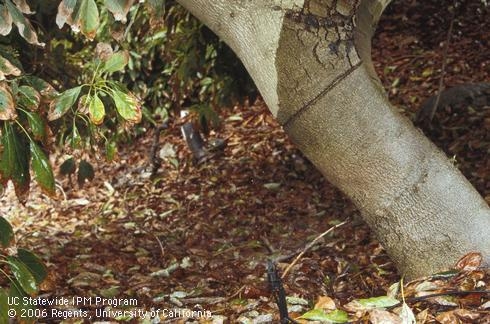Microirrigation (drip, microsprinkler, fan jet) applies water through small openings and can easily be prone to clogging. For this reason, filtration is used to avoid introducing sediments into the system and all fertilizers are injected before the filters to avoid their clogging the system. Before introducing a mixture of fertilizers into an untried system a jar test should be performed to make sure there are no chemical interactions between the irrigation water and anything that is introduced that might cause precipitation and eventual clogging. Depending on the size of emitters openings, some types are more or less prone to clogging. Anytime you use a new brand of fertilizer, make sure you do a jar test, because there have many problems in the past of just reading the label, seeing that it is soluble and then finding out to one’s horror that every emitters is clogged. For prevention of chemical and biological clogging see the article by Schwankl in this newsletter.
Microirrigation systems work best with pre-solubilized, liquid fertilizer solutions. In season application of dry fertilizers over the top of micro systems is very inefficient since only a fraction of the soil surface receives water necessary to solubilize the dry material. Very finally ground materials, such as gypsum or potassium sulfate can be suspended in solution by injectors if the materials meet the specifications of the irrigation system. The injectors continuously agitate the materials in the irrigation water to prevent settling out. The irrigation systems should be flushed after every use to prevent the materials from settling the ends of irrigation lines after the system is turned off.
Microirrigation can supply small, frequent does of nutrients throughout the growing season. Plant roots proliferate in the emitter wetted area which makes for a more active zone for taking up nutrients. Many growers have found that nitrogen fertilizer rates can be reduced due to the increased efficiency of uptake. Nutrients that require a larger root system than the microirrigation wetted pattern might need more frequent application than under sprinkler or furrow, such as potassium or micronutrients. Leaf tissue testing is a helpful too to adjust fertilizer applications, especially with a new system.
All pressurized irrigation systems require a certain amount of time to fill all laterals with water and achieve operating pressure. Injected fertilizer also requires a certain amount of time to distribute throughout the irrigation system. The ideal time to inject fertilizer is in the middle of the irrigation set. If injection takes place before the system is fully pressurized, there is a lack of uniformity if fertilizer placement (see http://cesantaclara.ucdavis.edu/files/19603.pdf). If the irrigations system is shut down before the fertilizer is fully distributed, fertilizer remains in the laterals, encouraging microbial growth that can lead to plugging. During long irrigation sets, soil mobile nutrients, such as nitrate-nitrogen should be applied near the end of the, while still allowing adequate time for system flushing.
And the mantra with all microsystems to avoid clogging is flush, flush, flush.
Attached Images:
